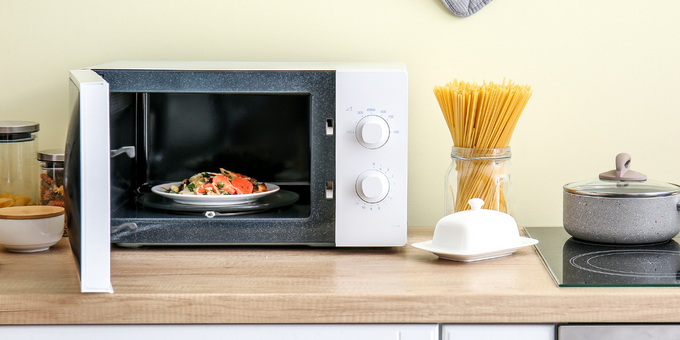Ready-made meals have been soaring in popularity in recent years, with a culmination of time shortages and ambitions to eat healthier at the centre of this phenomenon.
Findings from Ibisworld have blown the lid off the booming pre-made meal industry, revealing it has accumulated a market worth of 1.5 billion dollars and that Aussies are buying these meals at a growing rate of around 3% each year. What’s more, supermarkets are responding to the increasing demand, with a 13% rise in the selection of these meals on offer.
With many people clueing onto the dangers of excess sugar consumption – like obesity, diabetes and even the smaller issues like the classic afternoon slump – pre-made meals offer a more appealing option than deep-fried fast food and sugary snacks.

They make for an attractive solution as they require just 2 steps: heat it up and eat it. They also tend to have more wholesome ingredients like veggies, protein and grains – it's clear to see the combination of convenience and nutrition are part and parcel for the skyrocketing popularity of these ready-to-go meals.
But it’s not always the most affordable option, nor is it the most environmentally-friendly for that matter. Many of these meals are drowning in excess plastic, and with 8 trillion tonnes of plastic spilling into our oceans every year, and a resulting 100,000 deaths of marine life, this is no small issue. To make matters worse, the plastic packaging can leach into our food, and studies have shown that consuming microplastics can cause hormonal imbalances and nervous system dysfunction. With research finding we consume 250 grams of plastic each year and in our lifetime we'll probably eat over 20 kilos of plastic. Appetising, right?
One category of plastics, known as phthalates, target the endocrine system, with studies showing that long-term exposure can lead to issues with fertility and reproductive function. If that's not bad enough, another study found the ingestion of microplastic fragments causes inflammation in the intestines, with these findings indicating a resulting compromised gut barrier and microbiome.
Luckily, there’s a safer and cheaper solution.
Make your own ready-made meals.

Though there are a range of healthy processed pre-made meals on the market, it’s always cheaper and healthier when you know exactly what you’re putting into your meals. Plus, when you prepare it yourself, you’ll be sure no food goes to waste, along with getting to freeze any unused ingredients – meaning more time between shopping trips and less money spent. This is the crux of meal prepping – but there’s a lot more to it. Here’s why you should get started with this practice.
With inflation in full swing at its highest in 20 years and grocery prices rising with no sign of slowing, there’s never been a better time to cut costs where possible. It’s not just money that you’re losing when you buy pre-made meals or simply just your weekly groceries to cook daily at home – time is another casualty.
Time wasted over a hot stove is global nuisance, with people reporting hours of time lost to cooking – a study shows Australians and Americans spend 6 hours cooking, while Indians dedicate 13 hours to the kitchen. It’s not exactly the way most of us dream of spending our moments after work – family time, hobbies and leisure time tend to rank higher, and yet, we keep falling into the same time traps with cooking. This is where meal-prepping comes in.
But – it doesn’t just benefit us at home – it benefits the planet, too. This is because of the reduced electricity, gas and water usage that comes with less cooking time, along with the wide-reaching advantages of contributing less food waste. The latter of which is a massive contributor to climate change. The reason for this is down to the methane released by wasted fruit and veggie scraps, and with the United Nations reporting half of fruit and veggie produce ends up in landfill, meal-prepping is looking better than ever. Here’s how to get started.
Choose your ingredients.

It’s essential to choose ingredients with longevity, versatility and sturdiness. For instance, chopped berries won’t last long – but a whole apple will. Here are a few examples to get you started:
- Grains like pasta, rice, quinoa and bread.
- Legumes like chickpeas, lentils and beans.
- Veggies like carrot, celery, capsicum and broccoli.
- Whole fruit like apples and bananas.
- Nuts and nut butter.
- Cheeses – hard cheeses will last longer.
- Sauces and dips.
Proper storage.
Another element of meal-prepping is storage – and it’s pretty important considering the fact that it’s what prepping is all about. While some items will be shelf-stable, others require refrigeration, specifically meats, cheeses and rice. For your safety – and the freshness of the meals – be sure to keep these products sealed in the fridge. Even with the proper storage, some foods decrease in quality over time, and one way to deal with this is to prep for a few days at a time.
If you’re interested in learning the ins and outs of meal-prepping, along with taking on a fun and life-changing challenge – we invite you to join us for our 8-Week Program.
We’ll be quitting sugar and learning everything from how to create healthy meal plans and recipes down to meal prepping and how to manage sugar cravings. If you’re ready to ditch sugar and the host of maladies that come with it, JOIN NOW!






Leave a comment (all fields required)